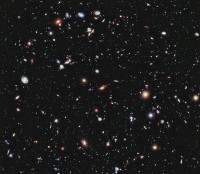This enormous mosaic of the Milky Way galaxy from NASA’s Wide-field Infrared Survey Explorer, or WISE, shows dozens of dense clouds, called nebulae. Many nebulae seen here are places where new stars are forming, creating bubble like structures that can be dozens to hundreds of light-years in size. (NASA)
Home This enormous mosaic of the Milky Way galaxy from NASA’s Wide-field Infrared Survey Explorer, or WISE, shows dozens of dense clouds, called nebulae. Many nebulae seen here are places where new stars are forming, creating bubble like structures that can be dozens to hundreds of light-years in size. (NASA) This enormous mosaic of the Milky Way galaxy from NASA's Wide-field Infrared Survey Explorer, or WISE, shows dozens of dense clouds, called nebulae. Many nebulae seen here are places where new stars are forming, creating bubble like structures that can be dozens to hundreds of light-years in size. (NASA)
This enormous mosaic of the Milky Way galaxy from NASA’s Wide-field Infrared Survey Explorer, or WISE, shows dozens of dense clouds, called nebulae. Many nebulae seen here are places where new stars are forming, creating bubble like structures that can be dozens to hundreds of light-years in size. (NASA)



